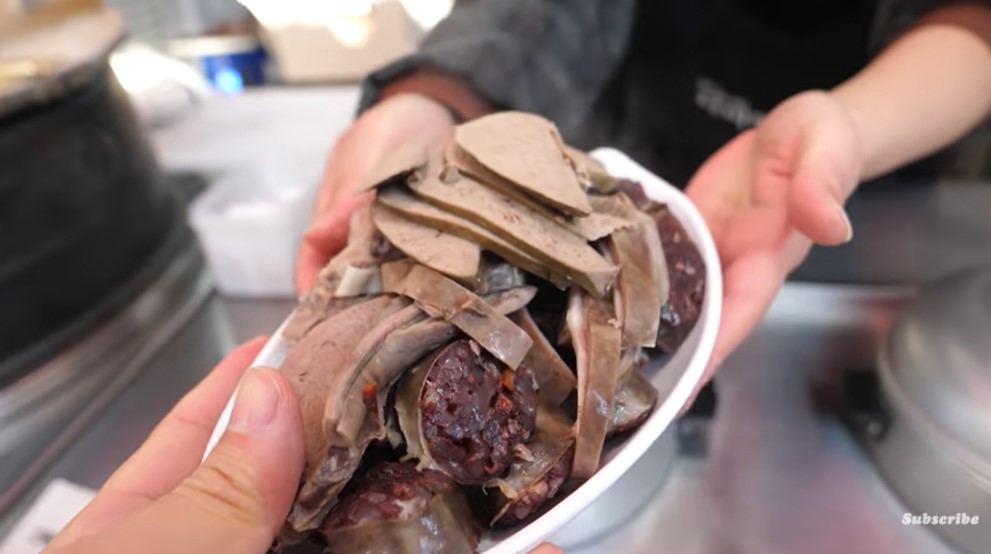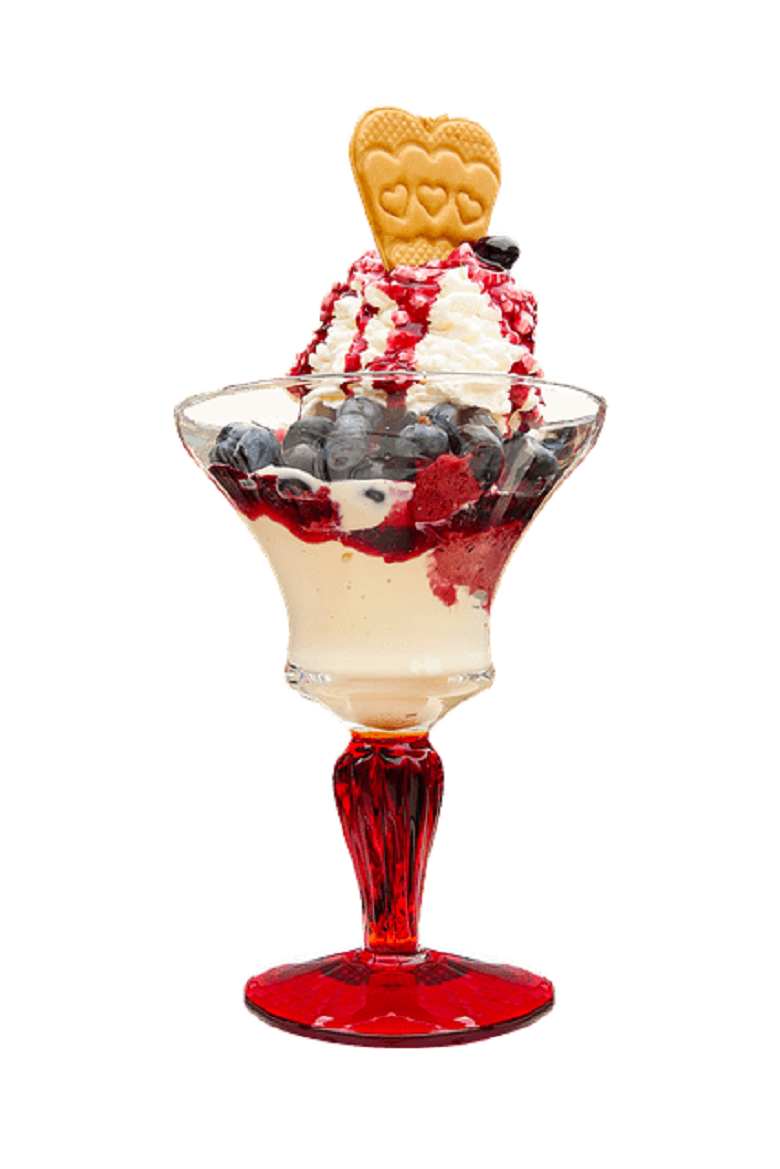The answer is Sundae. In this article, I will discuss the History of Sundae and whether the sundae dish is halal or Haram for Muslims.
Foods often share names with places, people, or even other foods. After all, truffles could be mushrooms harvested by pigs rooting them up or delicious chocolate ganache-filled orbs of delight. Napoleons, Belgian Fries (Or waffles), and Baked Alaska all take on the names of places. Other foods such as sweetbreads, prairie oysters, and head cheese are also deceptively named. However, the one dessert that you may not realize is named for Korean food featuring intestines is {Dramatic Pause} the SUNDAE.
The History of the Savory Sundae
The name Sundae may conjure up thoughts of sweet decadence, but the Korean dish is anything but sweet. The official spelling of this dish is Soondae. This dish is made with a cow’s (sometimes a pig’s) intestines that have been boiled and stuffed with a variety of ingredients.

Typical Ingredients
Noodles and pig blood often feature in this sausage. This Korean food is always made with intestines, even if the other ingredients change. Additionally, they may contain rice rather than noodles and kimchi (fermented cabbage), garlic, chili powder, shrimp, and sprouts. The exact recipe for this blood sausage may be slightly different depending on the region. Each chef has a different blend of ingredients to make this Korean food made with intestines their own.
The Sundae dish is not for Muslims:
The Muslims are always conscious about their food. Before buying/taking any food, it’s important for them to know whether the food is halal or haram. Obviously, I will appreciate them for this. Now the question is whether the Sundae is halal or haram food? Sundae dish originally made from a pig’s meat, cleaned intestines and blood. So, it’s not halal for Muslims. It could be halal if the dish is made with a cow’s ingredients instead of a pig’s ingredients. So, before buying your sundae dish, just confirm whether it is made with a cow’s or a pig’s ingredients. If it is made with a cow’s ingredients and there are no other haram ingredients included, then you can take this dish as one of your foods otherwise not. I personally never recommend this Sundae to Muslims since there is a rare chance of getting it as Halal. To have the sundae as one of your halal dishes, you can make this recipe at home yourself or visit a Muslim’s restaurant who makes the sundae dish with halal ingredients.
The History of the Indulgent Ice Cream Treat
The ice cream sundae is one of the most popular items on any dessert menu. Ice cream shops across America feature their own spin on this dessert. How did it start, and why is it named for a Korean blood sausage?

Let’s start with a bit of trivia on Sundaes. National Ice Cream Sundae Day is July 8th. This is fitting since July is one of the hottest months in the US. One history of this treat suggests that it was a way for soda counters to get away from Blue Laws. For those unfamiliar, these are the laws that restrict what can be sold on specific days and times. Generally, alcohol sales are restricted on Sundays or before, or after certain hours.
Believe it or not, but for a brief period, many groups wanted to restrict soda sales on Sunday. Ice cream sales were booming during the summer. Even today, ice cream sales improve during hot weather and dip during cooler seasons. Pharmacists with soda counters wanted to continue selling ice cream confections on Sunday, and floats were restricted due to the soda content. Druggists swapped out the soda for syrups like chocolate or caramel. It was the perfect swap.
Initially, the name was Sunday, but it was perceived as offensive to churchgoers. So, druggists and marketers changed the name to Sundae. Multiple cities (Two Rivers, Wisconsin and Ithica, New York) compete for the title of first Sundae, but the story each tells is essentially the same.
Typical Ingredients
Like the Korean counterpart, the exact ingredients vary from ice cream shop to ice cream shop. The basic concept is a bowl of ice cream smothered in chocolate sauce and fruit topping complete with whipped cream and a cherry on top. Some shops may include a caramel drizzle, candy pieces, nuts, or other delicious toppings.
Ice cream sundaes are fantastic do-it-yourself treats for children’s birthday parties since parents can control the toppings and allergy-inducing ingredients for many children. They are a popular dessert year-round since flavors can be changed to meet seasonal demands. Mint chip ice cream is delicious during the winter, and homemade strawberry is a favorite summer treat.
How Are These Two Related?
Now that we know a little about the two foods, how exactly are they related? It doesn’t seem that the sweet treat was named for the Korean delicacy made with intestines. How are they so similarly named?
The Soondae of Korea is much older than the ice cream dessert. However, it’s unlikely that this delicacy was even considered when the dessert was invented. The two foods are extremely popular in their respective countries, but their relationship ends with popularity and title. Therefore, the names were most likely mere coincidences.
Other Korean Food Made with Intestines
While most cultures have only one food made with intestines, Koreans serve many foods with intestines. A few others include Gopchang-gui, Seolleongtang, Gopchang Jeongol, and Haejangguk. The last of these is actually made with cow’s blood, not intestines, but falls along the similar path of Korean food made with intestines. Koreans may be more likely to cook with the intestines because many cultures with significant impoverished populations tend to cook with the entire animal.
Final Thoughts
Korean foods made with intestines do not often invoke up images of ice cream delights, but these foods do share similar names. While sharing a name and being popular are the only real connection these two have, they are wildly different dishes. Korean food made with intestines might seem a little unusual to our readers, but never knock something until you try it. However, don’t shun a good sundae on a warm afternoon.

